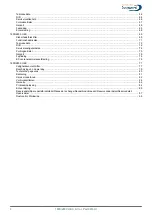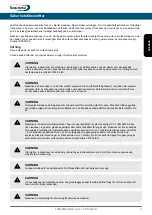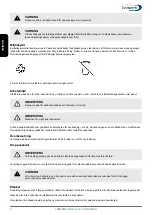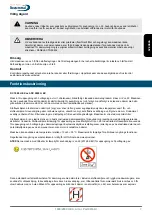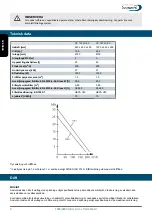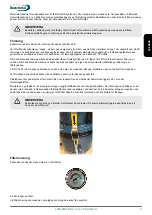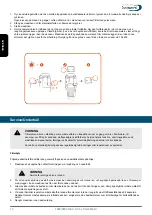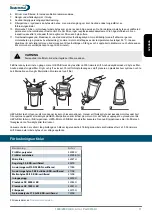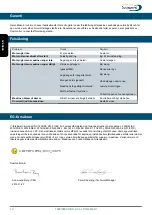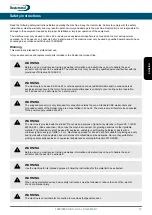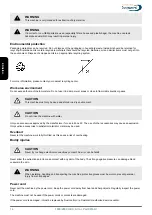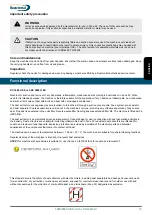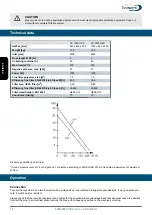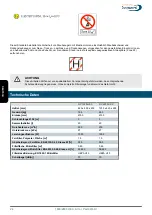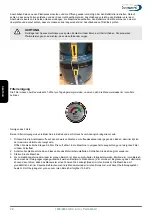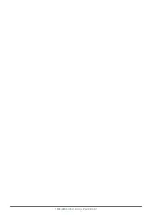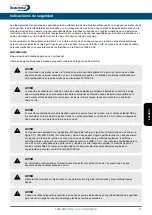
During filter cleaning, the machine should be running and the hose removed from the suction pipe.
1. Press the connector sleeve against the black stop lug on the exhaust duct or against the floor in order to produce maximum
negative pressure in the cyclone.
Open and close the hatch on the side 3-6 times. Air flows into the machine and cleans the filter by creating a reverse pulse.
2. Turn off the machine and let the material fall down. Reconnect the suction pipe.
3. Start the machine.
4. If the manometer needle is back in the green zone, work can continue. If it remains in the red zone, the cleaning process
should be repeated. Some actions (such as those that restrict air flow) may cause the manometer to display a high value
(needle in the red zone). The machine should never be used continuously when the meter is in the red zone, as there is a risk
of overheating. The transition from the green zone to the red zone takes place at 15.5 kPa
.
Service/Maintenance
WARNING
The manufacturer or a trained person must carry out an inspection at least once a year. Check, for example, if
the filters are damaged, the dust extractor's air tightness and the operation of the control unit, and inspect the
electrical components, seals and cables for equalization so that they are not damaged.
Potential equalization checks should be carried out regularly when modifications or repairs are made in the
system.
Filter change
The following safety precautions should generally be followed before starting maintenance:
1.
The machine must be disconnected from the power supply during cleaning and maintenance.
WARNING
Service must never take place inside the zone.
2.
To avoid the spread of dust, the machine must be vacuumed and wiped clean and the suction openings be blocked, for
example with plugs, before the machine is taken from the contaminated area.
3.
All machines must be considered as contaminated if they are removed from the hazardous zone. Appropriate measures must
be taken to prevent the spread of dust.
4.
At maintenance or repair, all contaminated objects that have not been cleaned satisfactorily must be disposed of. Such items
must be disposed of in dust-proof sacks in accordance with the regulations applicable to the disposal of waste.
18
1800/2800 H EX, Art.nr. Part 94169-I
ENGLISH
Содержание 1800 H EX
Страница 30: ...1800 2800 H EX Art nr Part 94169 I...
Страница 40: ...1800 2800 H EX Art nr Part 94169 I...
Страница 50: ...1800 2800 H EX Art nr Part 94169 I...
Страница 60: ...1800 2800 H EX Art nr Part 94169 I...
Страница 86: ...1800 2800 H EX Art nr Part 94169 I...
Страница 88: ...88 1800 2800 H EX Art nr Part 94169 I...
Страница 89: ...1800 2800 H EX Art nr Part 94169 I 89...
Страница 90: ...90 1800 2800 H EX Art nr Part 94169 I...
Страница 91: ...1800 2800 H EX Art nr Part 94169 I 91...
Страница 92: ...92 1800 2800 H EX Art nr Part 94169 I...
Страница 93: ...1800 2800 H EX Art nr Part 94169 I 93...
Страница 94: ...94 1800 2800 H EX Art nr Part 94169 I...
Страница 95: ...1800 2800 H EX Art nr Part 94169 I...

